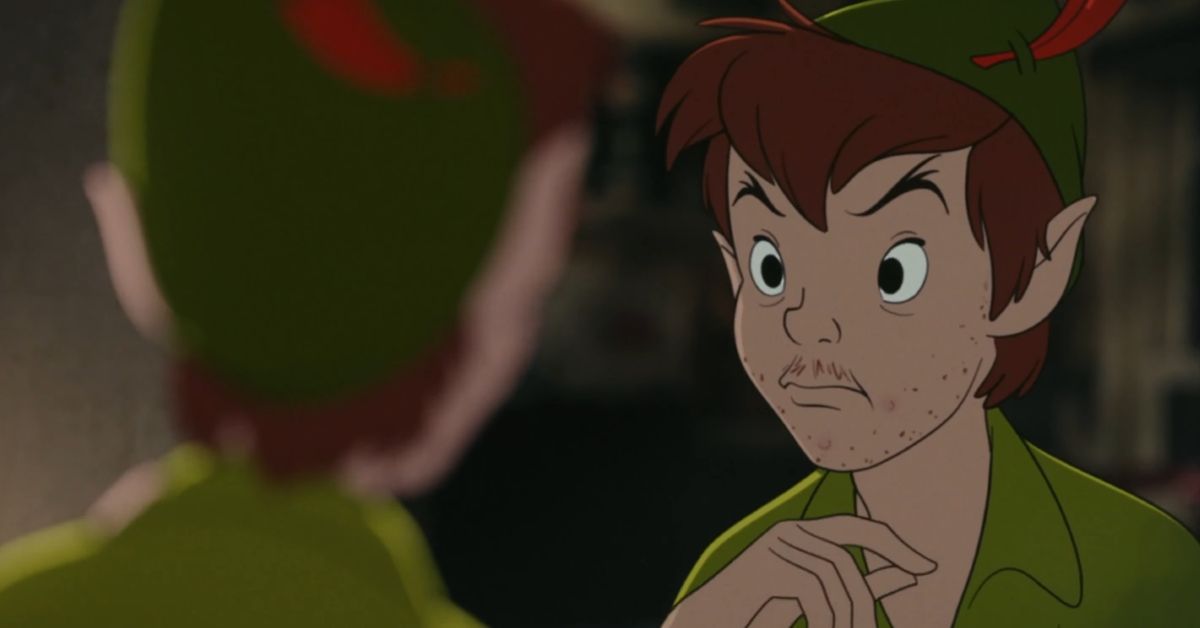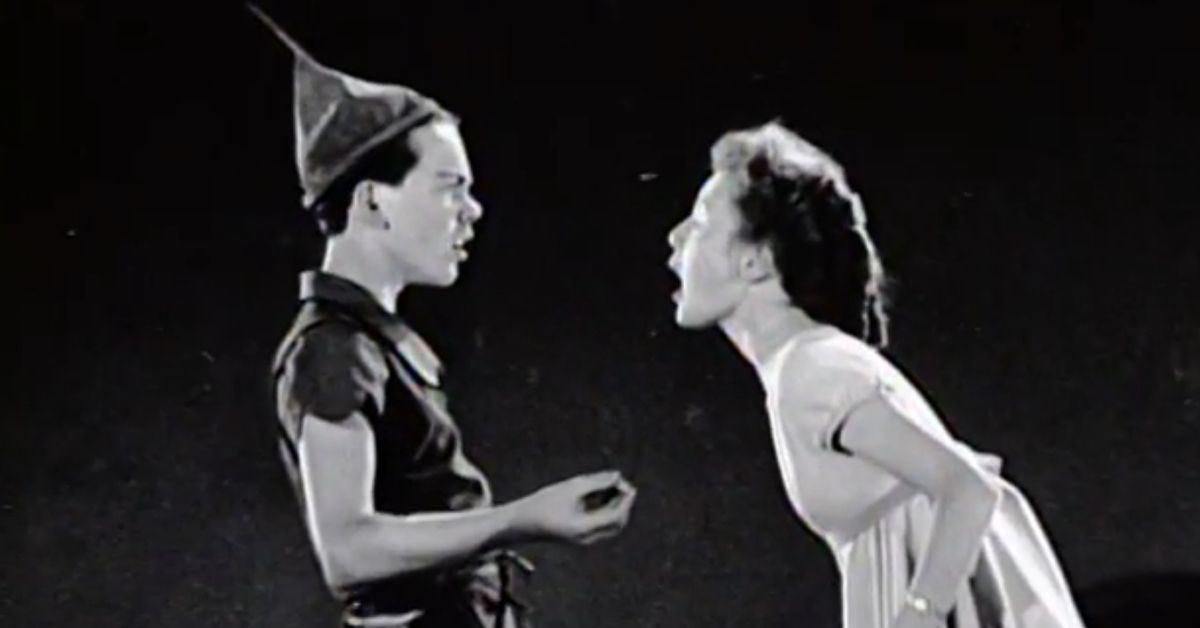When Chip’ n Dale: Rescue Rangers premiered on Disney+ last week, audiences went right to work pointing out all the fun easter eggs and gags. There were throwbacks and cameos, not just from all kinds of Disney eras but also different forms of animation and companies. But there was one particular note about the villain that certain audience members were left wondering … was this done on purpose? And if so, what the heck?
Chip ‘n Dale: Rescue Rangers follows the real Chip and Dale, two chipmunk actors (voiced by John Mulaney and Andy Samberg) who became stars in the ’90s. Years pass, and there’s a rise of toons going missing. After several hijinks, the two discover that it’s an operation run by Sweet Pete, aka Peter Pan (Will Arnett). Turns out, Pan himself grew up and was thrown out by Disney because he wasn’t cute and youthful anymore. So Peter turned to a life of crime, kidnapping toons and altering their bodies to use in bootleg movies. You’re probably wondering why his comically dark plot element has people shifting uncomfortably in their seats? Well, let me tell you the story of Bobby Driscoll.
Bobby Driscoll was a child actor who was first brought to Disney to star in the infamous 1946 Song of the South. The young actor’s career continued to climb, earning him two Academy Juvenile Awards for his roles in 1949’s So Dear to my Heart and The Window. Driscoll’s success put him on good terms with Walt Disney himself, which landed him the role of Jim Hawkins in Disney’s 1950 adaptation of Treasure Island.
When production began on Peter Pan, Driscoll was 16. He served as not only the voice of the iconic boy who never grew up but also provided the character model for the animators. Pan’s face was even modeled after Driscoll; he was as close to Peter Pan as any actor could possibly be. But in 1953, the same year Peter Pan soared into cinemas and into our hearts, it all came crashing down on the young teen. Marc Eliot, author of Walt Disney: Hollywood’s Dark Prince, spoke with Entertainment Weekly in 2019 about Driscoll’s departure from Disney.
"When Howard Hughes bought RKO, he, in effect, became the owner of the Disney studio. He controlled the money and he hated Bobby Driscoll. He hated Hollywood kids. He thought they were precocious, weren't real, and were incredibly annoying. He didn't want Bobby Driscoll to be with Disney anymore."
Driscoll was no longer a charming, marketable youth. He was growing, his body was changing, and Disney wanted nothing to do with it. Childhood friend and co-star Billy Gray mention that Disney shut the door on Driscoll without any forewarning.
"The way I understand it, it was a rather rude dismissal. I heard that he was informed that he was no longer under contract through them by driving up to the entrance and being refused entrance into the studio. That was his notification that he was no longer needed there."
Bobby Driscoll Was the Lost Boy
By 1961, a 24-year-old Driscoll struggled with finding work. In his frustrations and inner struggles, he became addicted to narcotics and was arrested for drug possession. The young actor spent six months in rehab, but after checking out only continued to struggle. According to Driscoll, nobody wanted to hire him because of his past arrests. In 1964, Driscoll moved to New York City in hopes of a fresh start and better job opportunities.
In 1968, Bobby Driscoll’s body was discovered in an abandoned tenement building in Greenwich Village. It was determined that heart failure spurred on by past drug use was the cause of his death. Because he carried no identification, his body sat unclaimed. He was buried in New York City’s Hart Island in an unmarked pauper’s grave. His mother wouldn’t find out about his death until two years later.
Since this reveal, the treatment of Pan in Rescue Rangers felt a little too on-the-nose for some viewers. Peter Pan was soon trending on Twitter, with fans calling the treatment of the character disrespectful to the real Driscoll. While the film did give the nod to how the entertainment industry treats former stars, some viewers felt this villain writing went a bit too far. Meanwhile, some fans also hoped to give the writers the benefit of the doubt, calling the uncanniness a major coincidence. At the very least, the topic is being discussed and, in a way, serves as a reminder of how the entertainment industry can abuse its hard-working stars.


